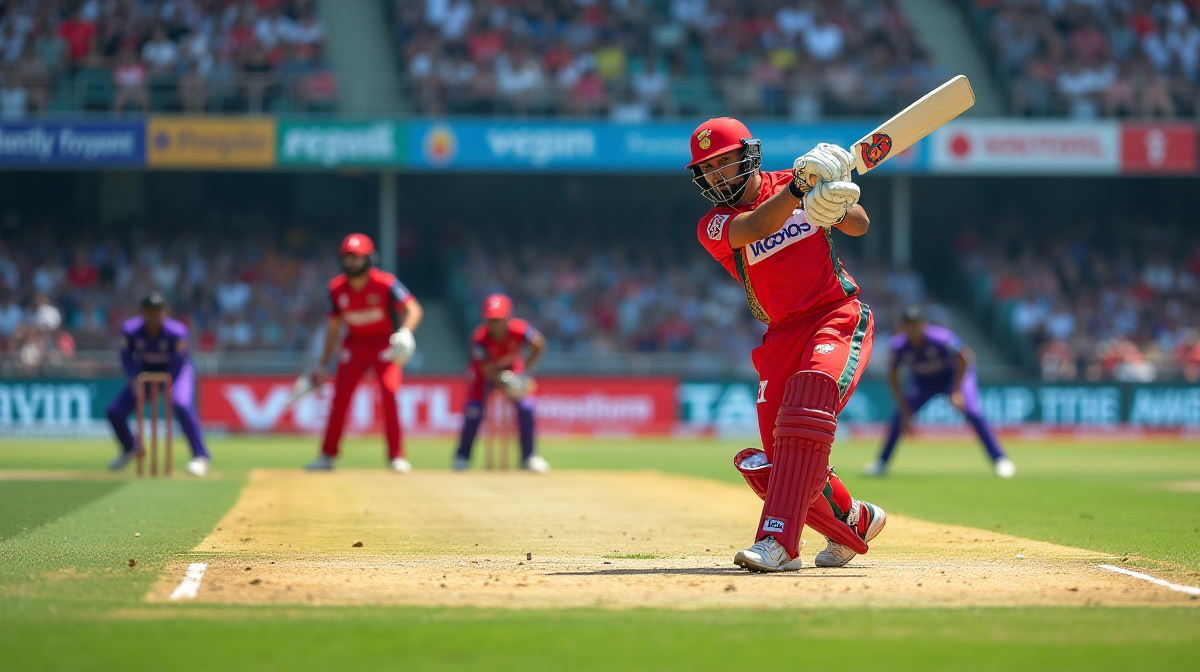IPL Win Secrets: Analyzing Team Performance
The Allure of the IPL: A Brief Overview
The Indian Premier League (IPL) has rapidly become a global phenomenon, captivating audiences with its high-octane cricket and star-studded teams. More than just a tournament, the IPL represents a fusion of cricketing talent, strategic brilliance, and intense competition. The quest for an IPL Win drives teams to constantly innovate and refine their approaches. From thrilling last-ball finishes to record-breaking performances, the IPL delivers drama and excitement with every match. Understanding what separates the winners from the rest requires a deep dive into the factors that contribute to success.
Beyond Luck: The Data-Driven Path to Victory
While moments of brilliance and individual heroics certainly play a role, consistently achieving success in the IPL demands a data-driven approach. Modern cricket analysis goes far beyond traditional statistics, delving into intricate details of player performance, match situations, and opponent tendencies. Teams are increasingly relying on advanced analytics to inform their decisions, from player selection and strategic planning to in-match adjustments. The ability to accurately assess the ipl match today win probability is crucial for making informed choices.
Defining Team Performance in the IPL Context
Team performance in the IPL is a multifaceted concept. It's not simply about having the most star players; it's about how those players synergize, adapt to different conditions, and execute their roles effectively. A truly successful team demonstrates consistency across all departments – batting, bowling, and fielding – and possesses the tactical flexibility to overcome challenges. A crucial element is understanding the impact of the today ipl match toss win on overall game strategy.
Key Performance Indicators for IPL Teams
Batting Prowess: Analyzing Run Rates & Key Metrics
A powerful batting lineup is fundamental to any IPL contender. Analyzing run rates across different phases of the game provides valuable insights into a team's batting strategy and effectiveness.
Average Run Rate across Phases
Teams that consistently maintain high run rates in the Powerplay set a strong foundation for a competitive total. Equally important is the ability to accelerate during the middle overs and finish strongly in the death overs.
Boundary Percentage & Six-Hitting Ability
The frequency with which a team clears the boundary is a direct indicator of their aggressive intent and power-hitting capabilities. A high six-hitting percentage, in particular, can significantly impact the scoreboard.
Consistency of Top-Order Batting
A stable and reliable top order is essential for providing a solid platform. Consistent performances from the top three or four batsmen can alleviate pressure on the middle order and ensure a steady flow of runs.
Bowling Efficiency: Deconstructing Opposition Lineups
Complementing a strong batting lineup is an equally potent bowling attack. Analyzing economy rates and wicket-taking ability by bowler type is crucial for identifying strengths and weaknesses.
Economy Rates & Wicket-Taking Ability by Bowler Type
Understanding which bowler types are most effective against specific opposition batsmen is vital for crafting optimal bowling plans.
Death Bowling Performance: Controlling the Final Overs
The ability to bowl accurately and effectively at the death – restricting runs and taking crucial wickets – is a hallmark of successful IPL teams.
Powerplay Bowling Impact: Early Wicket Pressure
Taking early wickets in the Powerplay can disrupt the opposition's momentum and put them on the back foot.
Fielding Standards: The Often-Underestimated Aspect
Fielding is often the unsung hero of T20 cricket. A brilliant catch or a sharp run-out can change the course of a match.
Catching Efficiency & Impactful Fielding Efforts
High catching efficiency minimizes errors and maximizes opportunities to dismiss batsmen.
Run-Out Opportunities & Direct Hits
Converting run-out opportunities requires agility, accuracy, and quick thinking.
Ground Fielding & Saving Runs
Efficient ground fielding and minimizing extra runs are crucial for containing the opposition's scoring rate.

Team Strategies & Tactical Approaches
Powerplay Strategies: Setting the Tone
The Powerplay overs often dictate the tempo of the match. Teams must decide whether to adopt an aggressive or cautious approach.
Aggressive vs. Cautious Approaches
An aggressive approach aims to maximize runs in the Powerplay, while a cautious approach prioritizes preserving wickets.
Leveraging Player Strengths in the Powerplay
Identifying batsmen who excel at hitting boundaries in the Powerplay is crucial for maximizing scoring opportunities.
Middle Overs Management: Building Momentum
Successfully navigating the middle overs requires rotating the strike and finding gaps in the field.
Rotating the Strike and Finding Gaps
Keeping the scoreboard ticking over and preventing dot balls is essential for building momentum.
Importance of Partnerships
Strong partnerships between batsmen can stabilize the innings and set the stage for a strong finish.
Death Over Execution: Finishing Strong
Effective death bowling is characterized by yorker consistency and strategic field placements.
Yorker Consistency & Variations
Bowling accurate yorkers is the most effective way to restrict scoring at the death.
Strategic Field Placements
Placing fielders in key positions can cut off scoring opportunities and create catching chances.
Utilizing All-Rounders Effectively
All-rounders provide valuable flexibility and balance to a team.
Impact of All-Rounders on Team Balance
All-rounders can contribute with both bat and ball, providing a valuable asset in all phases of the game.
Optimal Usage of All-Rounder Skills
Maximizing the impact of all-rounders requires careful planning and strategic deployment.
The Role of Data Analytics in IPL Team Performance
Data analytics has revolutionized the way IPL teams approach player selection and strategy formulation. The ipl schedule 2024 with venue is also analyzed to understand pitch conditions and adapt strategies accordingly.
Leveraging Data for Player Selection & Drafting
Data-driven insights can help teams identify undervalued players and make informed decisions during the player auction.
Opponent Analysis & Strategy Formulation
Analyzing opponent strengths and weaknesses allows teams to develop targeted strategies.
In-Match Analytics & Real-Time Adjustments
Real-time data analysis enables teams to make informed adjustments to their tactics during a match.
Predictive Modeling and Future Performance
Predictive models can help teams forecast future performance and identify potential areas for improvement.

The Impact of Captaincy & Coaching on Team Success
Captaincy Styles & Their Effectiveness in the IPL
Effective captaincy involves making sound tactical decisions, inspiring the team, and managing pressure situations.
Coaching Strategies and Player Development
Coaches play a crucial role in developing players' skills and fostering a positive team environment.
On-Field Decision Making: Tactical Masterclass vs. Costly Errors
Strategic field placements, bowling changes, and batting order adjustments can all have a significant impact on the outcome of a match.
Conclusion: The Winning Formula – A Holistic Approach
Combining Data, Strategy & Team Dynamics
The key to consistent success in the IPL lies in combining data-driven insights, strategic brilliance, and strong team dynamics. Understanding which teams are looking strong to be on the ipl qualified teams 2024 list is a key aspect of understanding the tournament’s landscape.
Future Trends in IPL Team Performance Analysis
Future trends in IPL team performance analysis are likely to include greater integration of artificial intelligence and machine learning.
Predicting Potential Champions – Based on Data Insights
Based on current data and trends, identifying potential champions requires a comprehensive assessment of team strengths, weaknesses, and tactical capabilities.


